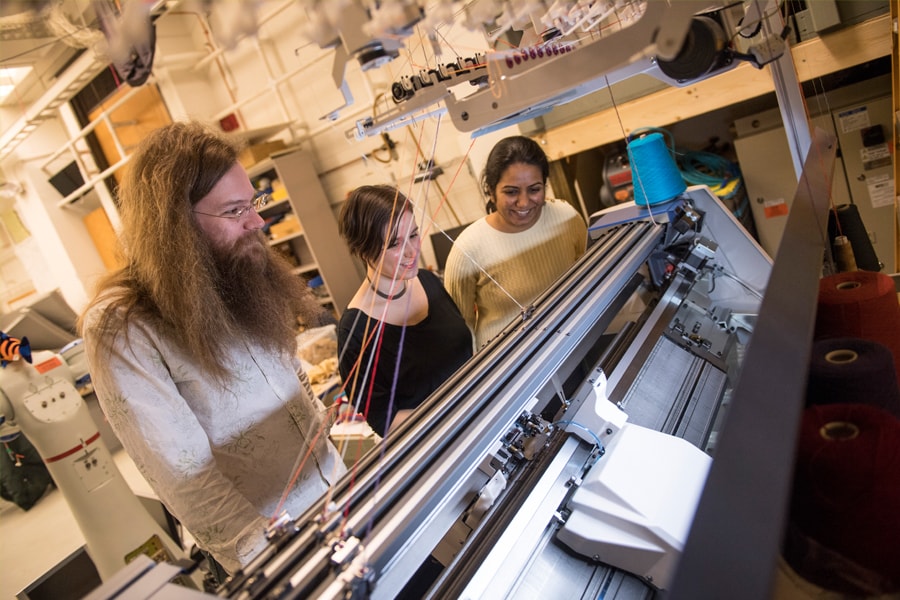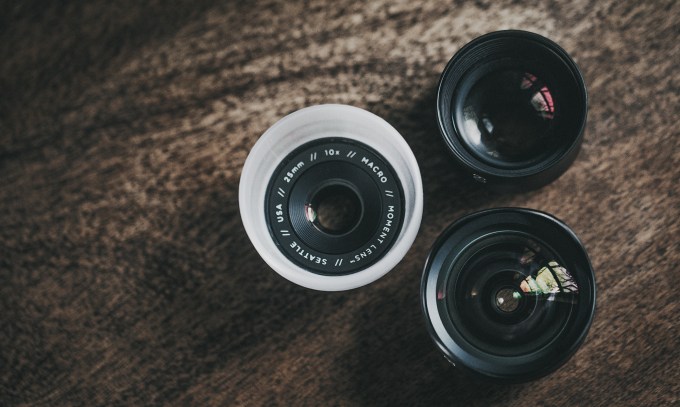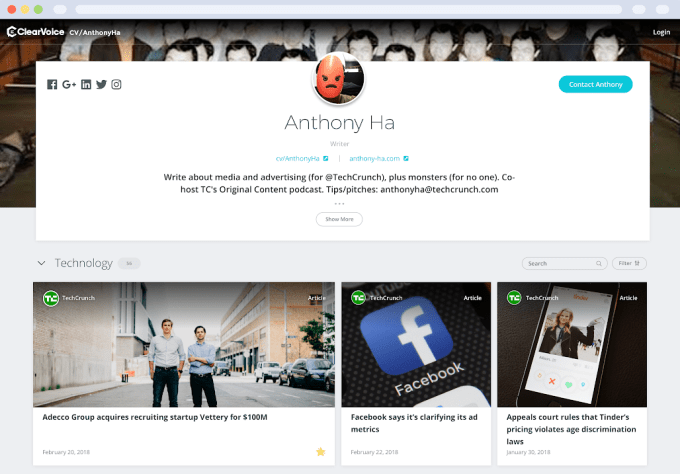Maggie Lane is a writer and producer of virtual reality experiences and covers the industry for various publications.
It was barely minutes after the Ready Player One premiere, and texts from my friends and colleagues in the VR community began pouring in…
“How was it?”
Those of us in the mixed reality industries have been waiting for this film like the VR messiah that will deliver us to public mass adoption. And the breathless prayer? “Please, oh please, let Ready Player One make VR look cool.”
To many, VR creators make expensive content that few will ever experience or have interest in experiencing. I have read dozens of articles in the last year announcing either the end or the beginning of VR.
I have seen VR portrayed as a portent for humanity’s most solitary, basic, and evil instincts over and over again in television and film. Most of all, I received questions from people that are confused by what this technology is and moreover, why it even has value.
Because of Ready Player One, there are now giant billboards on streets around the world where someone is wearing a VR Headset. For those of us who have lived and breathed this technology for years, this movie is everything.
And so, I was excited to find that yes, this movie portrays something that I’ve known and felt in my bones for a while now — VR is in fact cool.
I’m imagining that people will now want to suit up, run to THE VOID or the Imax Experience Center and try VR for themselves. But here’s a word of caution to the uninitiated: VR is currently not the OASIS. Please do not expect VR to feel, look and behave like the OASIS, because we are not there yet. But I’ll be damned if we’re not close.
So given this, here’s an overview of what’s present in the film, where we are today, and what the future might hold.
NOTE: Some minor film spoilers below.

Headsets
Film:
At first glance, the headsets in Ready Player One look surprisingly like generation one Oculus Rifts in size and shape. However, the film claims that Head-Mounted Displays (HMDs) projection in 2024 is composed of harmless lasers beaming directly into your retinas– far from our current display-based HMDs. The film’s headsets appear to be inside-out tracking, lightweight, wireless, and can produce images indistinguishable from reality with minimal or no processing lag. Other sci-fi-based headsets appear later in the film, when Wade upgrades his HMD to a model with semi-transparent glass. In the book, there are allusions to OASIS’ massive servers in Columbus, so all the processing power is probably not coming from the headsets themselves but rather sent via 5G (or higher) network to each user.
Today:
Off-the-shelf HMDs are tethered to powerful PCs, and those coming later in 2018 (Vive Pro , Oculus Go, and supposedly Oculus Prototype Santa Cruz, among others) are either a mobile-based power/resolution or require a PC wireless display link. While we don’t have lasers entering our retinas (yet), we can assume someone’s working on it.
Tomorrow:
When it is released, Magic Leap promises to be the closest thing we have to a complex mixed reality headset. It beams information directly into your eyes that utilize your sense of depth, which should make for a more comfortable experience than hours in a headset staring at pixels; yet, it’s imperfect as the field of view will in no way be full resolution like in the OASIS. Right now the design is somewhat clunky– there’s still a walkman-like battery pack to deal with and a FOV of 40 degrees at best. Other than the release of Ready Player One, the launch of Magic Leap One is probably the most anticipated event in the brief history of VR. As a side note, the term “VR” may no longer be applicable, because it’s predicted that AR and VR headsets will merge and become one device.

Haptics
Film:
The haptic suits in RPO are aesthetically gorgeous. As described in the original book, an interwebbing of sensors and material covers the user’s body — it looks like a slim-fit wetsuit but with gloves and boots. When characters get shot or hit in VR, they feel the pain on their bodies, which thematically ups the stakes during the battle scenes. There’re also a few instances of “pleasure” haptics.
In the VR nightclub, Art3mis dances against Wade and the crotch region of his suit, ahem, “activates.” Other scenes contain a few cheeky allusions to some risque things people might be be up to in the OASIS.
Our villain Nolan Sorrento wears a haptic suit on his bouts in the OASIS, but usually confines the haptic experience to an ornate leather chair that allows him to feel sensations/maintain a patriarchal technical overlord vibe. (Cool.)
Today:
Sorrento’s chair feels reminiscent of the Positron rig that has been dotting film festivals and hotels lately. They’re quite comfy and are great for first time VR users. In terms of romantic haptics, the teledildonics and VR porn industry is alive and well, and new products keep being developed. Haptic gloves like Haptx VR Gloves do exist and keep getting better! So far, texture, shape, and cold/warm sensations are all achievable by individual systems and products.
Tomorrow:
Complete sensory VR immersion is years away, but is one of the most oft requested and dreamed about advances in the industry. Teslasuit appears to be the next product to market that aims to let you feel it all in VR, and it looks a hell of a lot like Wade’s suit.

Movement
Film:
One of the first scenes in the film features Wade navigating the OASIS on a simple omnidirectional treadmill. As the film progresses, movement mechanics get into completely new territory. The “sixers” (the film’s enemy army against the Gunters) stand upright in individual pods with treadmills beneath them; if needed, they and can sit down to “drive” vehicles. On the Gunter side, in Aech’s truck the “Hive Five” are tethered to the ceiling via cables for unobstructed fighting moves.
Today:
Omnidirectional treadmills exist today but the kinks are being ironed out. Many are designed similar to ones in the film (micro- and macro-treadmill arrangements). User motion tracking is done via external sensors, and for maximum movement the closest thing we have to a tetherless VR experience is location-based experiences a la The Void, and that still requires backpacks.
Tomorrow:
A Virtual Reality where your physical movements match virtually in a 1:1 ratio without the need for wires. Inertial Measurement Units (IMUs) are already in use for motion capture in films and games, and these systems can be integrated into next-next-gen haptic suits for full-body presence. (That being considered, some folks will always want to play from a couch or chair.)

Digital currency
Film:
One universal currency exists in the OASIS, and its value is more stable than real-world currency. (Is FIAT even real currency some might ask? Don’t start with me, man). In the OASIS, currency is more trusted than in the actual world. Wade receives bonuses for leveling up in the race to catch the egg, and uses digital currency to order real products via drones in the real world. In the OASIS, users can go on quests that require work that are actual proof-of work.
Today:
So cryptocurrency today is a bit of a mess. Between ICO’s failing to launch or completely made up advisory boards, people are doubting the security of a digital currency. That being said, millions of people are eager to learn more about this currency revolution and its claims to strive for the financial equalization of the world.
Tomorrow:
Democratizing cryptocurrency is paramount. Some companies, like Robin Hood, are doing a great job by providing cryptocurrency to the masses via readily accessible mobile apps. Some argue that Ready Player One actually predicted the rise of cryptocurrency; however, it did not predict alt-coins such as Ethereum, Monero or Ripple.

Avatars
Film:
As Wade declares in the beginning of the film, in the OASIS you can “be whomever you want to be”, whatever appearance, ethnicity, background, gender, sex, or species. It’s all up to you as a consumer and denizen of the OASIS. For example, Wade dawns a haircut which is then corrected by Art3mis to be cooler (more spikey). Wade’s best friend Aech is an African American female but is able to be a male muscled warlord in the OASIS. There’s a glorious beauty to avatars in this film for the free folk that is contrasted by the monochromatic Sixers in their Loyalty Centers. This is a free and open internet — be who you want to be.
Today:
It would be lovely if who we are in VR is a direct representation of our real selves — however current methods for duplication leave out facets of what makes us human. For example, Facebook wouldn’t let this VR user be fat. Scanning technologies such as Windows Mixed Reality capture stages can scan your likeness — but it will cost a pretty penny.
Tomorrow:
In the future, avatar creation will be a democratized process where users can scan themselves (either face or body) to import into the cloud, or simply be whatever figure suits their preference. Think of this as a VR Chat-level of character selection but with customization to the nines.

We are at the cusp of a media revolution: New definitions of reality develop every day, and Ready Player One is giving these technologies mass market exposure.
At the same time, this film speaks to the morality surrounding how we equip ourselves with immersive tech in the new digital frontier. Will the OASIS be well protected and well propagated? Should we look to artists or business people to be the curators of this space?
If we are to avoid the advertisement-laden virtual realm that RPO’s 101 Industries desires, we must take steps in this early adoption phase. That is the core of the film’s premise: virtual reality has as much impact on the world as real reality. Choose wisely.

Source: Tech Crunch












 This has to be done carefully — the machines aren’t the same as human knitters, obviously, and a poorly configured pattern might lead to yarn breaking or jamming the machine. But it’s a lot better than having to build that pattern purl by purl.
This has to be done carefully — the machines aren’t the same as human knitters, obviously, and a poorly configured pattern might lead to yarn breaking or jamming the machine. But it’s a lot better than having to build that pattern purl by purl.




 Like I said, when I visit a Google site, I expect that. But a browser is supposed to be a tool, not a private platform, and the idea that every tab I open is another data point and another opportunity for Google to foist its algorithms on me is rankling.
Like I said, when I visit a Google site, I expect that. But a browser is supposed to be a tool, not a private platform, and the idea that every tab I open is another data point and another opportunity for Google to foist its algorithms on me is rankling.





















